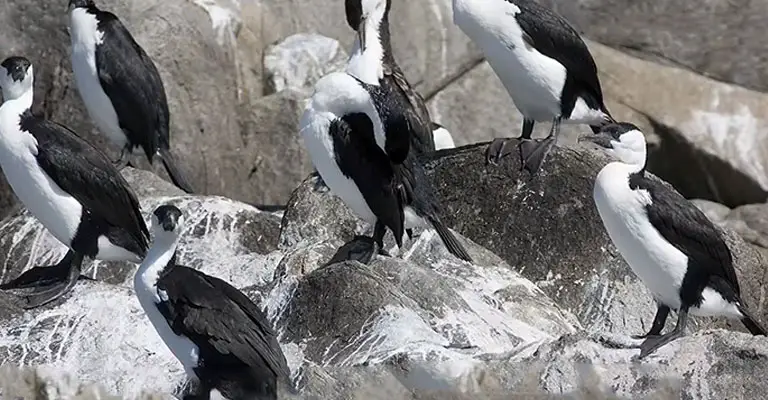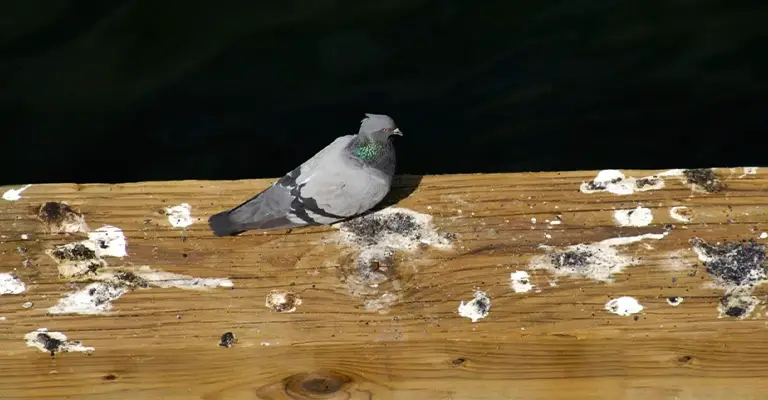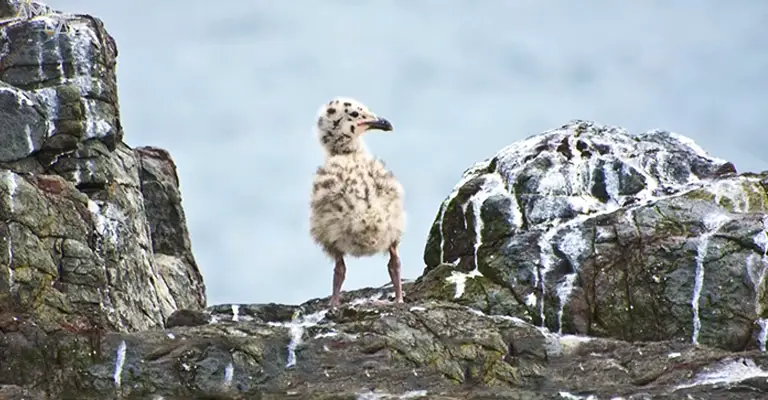Are you wondering what caused your vehicle’s windscreen and roof to be covered in white paste? It is highly probable that birds’ droppings were on it.
So, why are birds poop white? Birds’ poop consists of a white paste of uric acid and colored feces.
The white paste, uric acid, is a nitrogenous waste from the protein products consumed. Unlike mammals that produce urea, birds excrete nitrogenous waste in the form of uric acid to save on water.
This article covers related topics on why birds’ poop is white. In addition, it gives more information on why the uric acid is hard to wash and addresses tips to clean off the white paste.

Why Are Birds Poop White? (Everything You Need To Know!)
Birds’ white paste is a nitrogenous waste excreted as uric acid mixed with colored fecal matter.
Birds excrete nitrogenous waste in the form of uric acid. This is because it requires less water to remove from their bodies than the soluble urea by mammals and the ammonia by sea animals.
The concentration level of uric acid gives it a white color that may vary depending on the number of feces in the waste. We see the white paste being conspicuous because the paste covers the brown fecal matter. Also, the white color is more visible.
Why Do Birds Get Rid Of Their Nitrogenous Waste In the Form Of Uric Acid?

Nitrogenous waste is a byproduct of protein products consumed by birds. Curic acid is produced in the kidneys and transferred to the cloaca for excretion.
Birds are small by nature and need to preserve the little water they can hold in their bodies.
To achieve maximum water retention, they eliminate nitrogenous waste products in uric acid, which requires little water to eliminate.
Compared to mammals, which have lots of water in the body, they excrete their nitrogenous waste as soluble urea in urine.
Why Is Uric Acid Excreted By Birds So Sticky On Surfaces?
Due to its insoluble nature, ureic acid sticks to surfaces. If left for a long time, cleaning it off becomes a task. If you leave your vehicle outside under a tree where birds perch, you will notice the droppings on the car.
Using the wiper may seem futile if the droppings stay on for a long time. Uric acid is insoluble and highly concentrated, so it sticks to surfaces faster.
Accordingly, because the droppings contain little or no water, the white paste dries faster on surfaces. Cleaning them off becomes challenging, especially if they are exposed to direct sunlight.
How to clean off birds’ poop?
Let’s see how one can quickly clean off the stick bird’s poop.
You can use water and a cloth to wipe the droppings if they are not stuck on the surface. However, if the poop has stuck on the surface, such as the windscreen, consider using any of the following solutions.
- Unflavored club soda or carbonated water solution
- WD-40 bird’s poop stain remover
- Baking soda solution
- Basic or neutral shampoo
- Hot water and washing soap
Benefits Of Excreting Nitrogenous Waste In The Form Of Uric Acid?

Birds, depending on their wingspan and capacity, must maintain a lean weight for easy flight. To keep their weight balanced, they need little water.
Such small amounts of water are insufficient to excrete nitrogenous waste in the form of soluble urea that would call for a lot of water to dissolve. Therefore, excreting uric acid helps keep their body weight low for flight.
On the other hand, excreting urea helps save water for birds’ survival. The uric acid (white paste) is a nutritious source of manure, especially for growing vegetables in the kitchen garden.
Is Bird Poop Toxic To Humans?
Yes. Bird poop is toxic and harmful to humans as it carries different diseases and live bacteria. Most of these are parasitic and from the nature of their diet.
The fungal bacteria in the droppings affect the respiratory system and cause nervous system inflammation.
If you enter a bird’s house with poop that has accumulated for a long time, you will feel a burning sensation as you inhale the ammonia and uric acid.
Not only are the bird’s poops harmful to humans, but they are also detrimental to birds, especially caged birds. Be sure to clean and remove the waste products in the cages to reduce disease build-up.
Avoid direct contact with the droppings. If accumulated, take the droppings to the garden for use as manure.
FAQs
Listed below are questions asked to help understand the nature of bird poop.
No. It’s not safe. Birds’ poop is acidic and contains bacteria and diseases. It is advisable to avoid direct contact with the droppings as they can be harmful to your skin.
Vinyl floor tends to form a sticky bond with the bird’s poop; in most cases, the floor ends up with a stain that is hard to clean. For efficient cleaning, use warm or hot water with baking soda to wipe off the mess.
Scrub the floor with a soft brush to avoid scratching it. You can repeat the process until the stain is removed.
Yes. Birds feed on various diets that dictate the color of their poop. You may have noticed a change in the color of your bird’s poop after feeding it on a particular feed.
The color change is average, but if severe diarrhea accompanies the color change, there may be health problems. Consider medical assistance from an avian doctor.
Conclusion
Bird’s poop is seen to be white due to the presence of concentrated uric acid in their feces. Unlike mammals, birds excrete nitrogenous waste from protein products in the form of uric acid, which is white.
You may notice the brown fecal material since it is excreted first, then the uric acid follows, covering the fecal matter. Birds excrete nitrogenous waste in the form of uric acid to help save water and maintain lean body weight for easy flight.